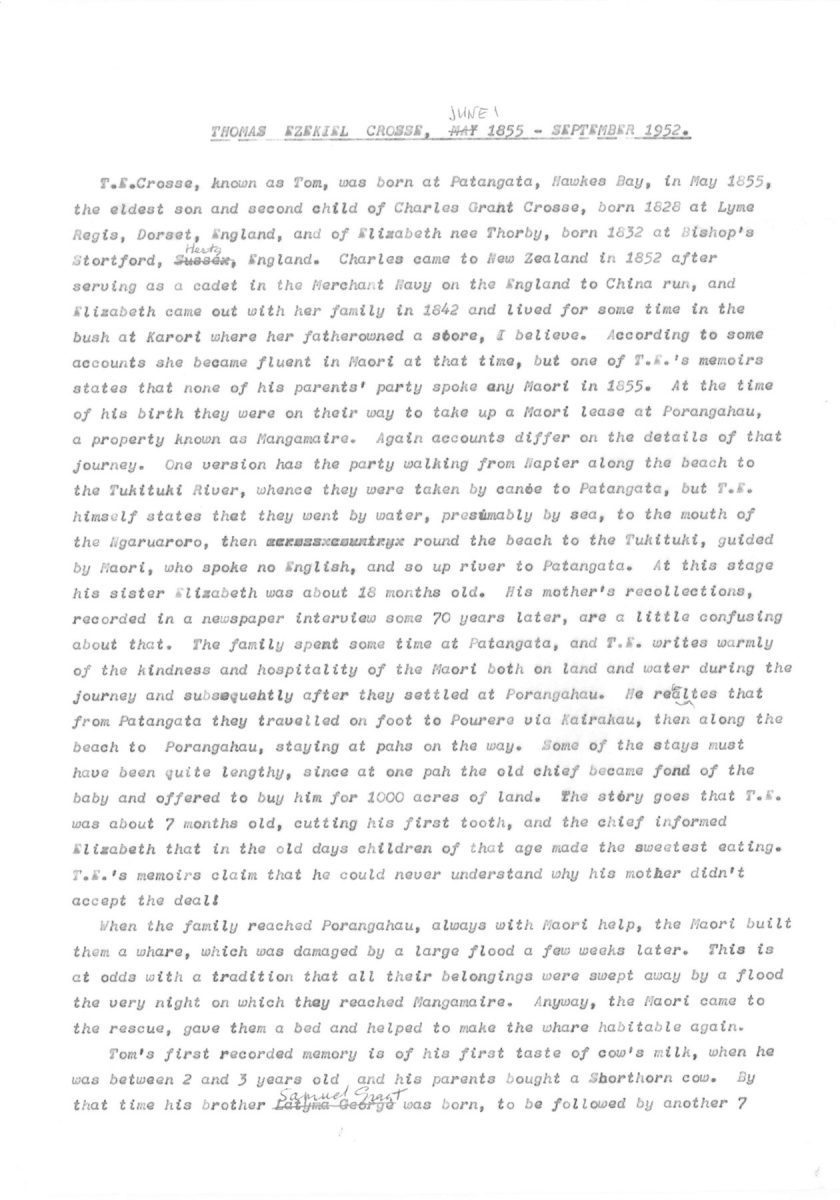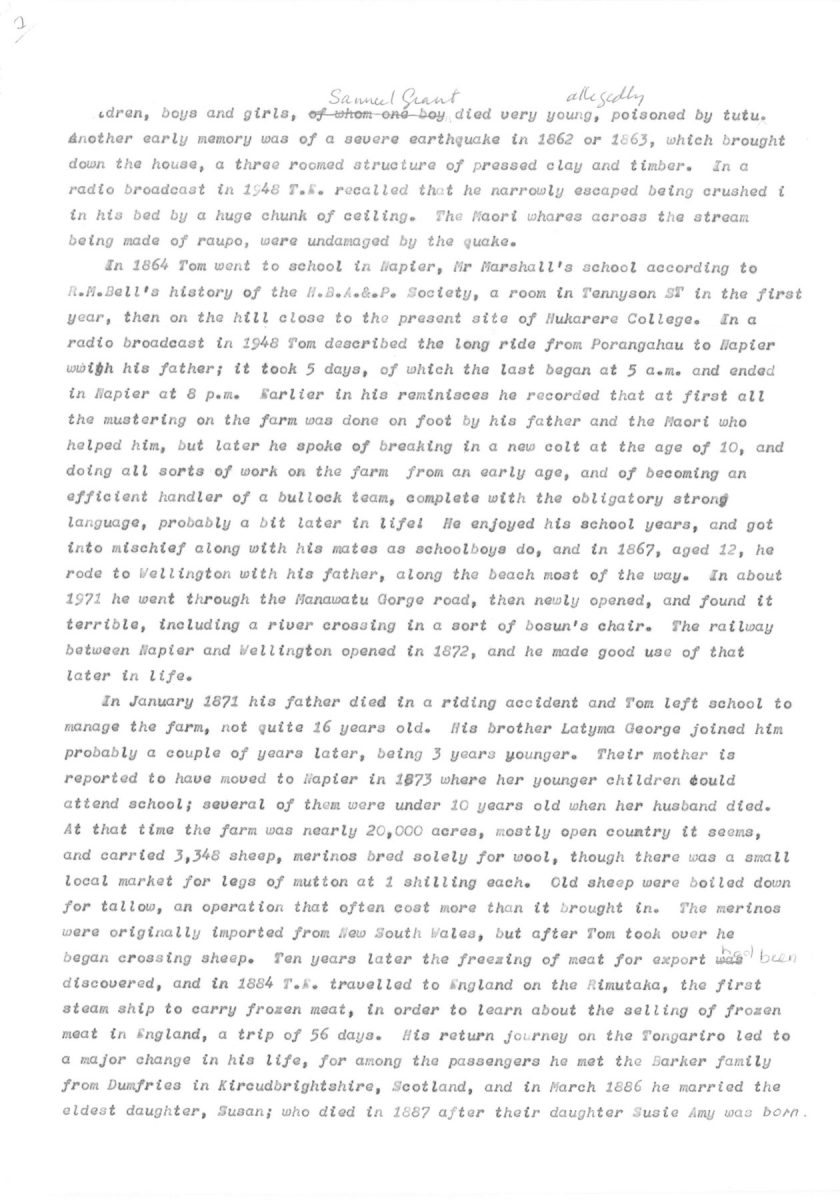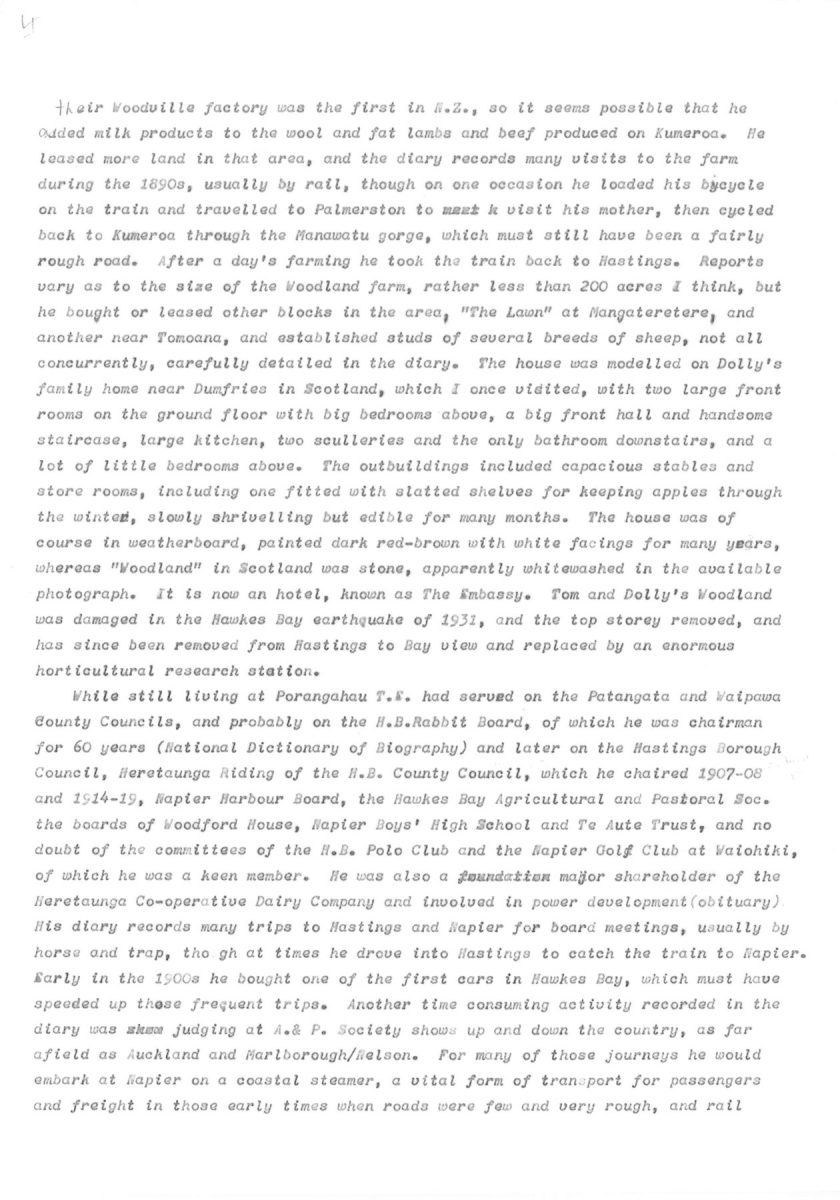Page 3
According to Amy, she was cared for by the local Maori because her father considered that her aunts were too young for the job – “Dolly” was only 18 – but I imagine that she urgently needed a wet nurse, whom he would have found among his neighbours at Porangahau. In 1889, however, Tom and Dollie (David Anne Thomson Barker) were married and Jessie Dorothy was born to them in 1890s. His radio broadcast of 1948 states that he moved from Porangahau to Hastings 1890, and [Handwritten – I have a feeling] that Dolly had a miscarriage before Jessie was born. His diary for most of the 1990s [1890s] is in the hands of T.H. Crosse, his grandson, and a copy has been lodged in the archives of the Napier museum. It records the building of Woodland, in St George’s Road, Hastings, in 1893, the birth of Thomas Grant Crosse in that year, after which Dolly was unwell for some time, the birth of Hugh Edward in 1896, and Louie Audrey 1897, after which Tom and Dolly sailed to Scotland, leaving the children to the care of Margaret Otto Barker – Madge, known to the younger generations as At (aunt) – who lived with the Crosses until she died, teased unmercifully by Tom in the 1930s, when I remember them, though perhaps he was kinder when he was young and fully occupied. Their youngest child, Margaret Mary Crosse, was born in 1904.
T.E. Crosse was a very able and innovative farmer, who developed his properties to a very high standard. In the early days the wool clip was of course harvested with hand shears by the local Maori, presumably in the open air, baled and carried from the beach on barges to lighters lying off the coast – I suppose that inland farms brought it to the beaches by bullock wagon, and that tallow was taken to market the same way. The wool would have been transferred to clippers for transport to England. Tom built up his flocks and experimented with cross breeding on Mangamaire, and as the leases on that land expired he relinquished them to neighbours, and during the 1880s took up 5,000 acres at Kumeroa, while still living on and farming Whakawhakanga, about 6,000 acres remaining at Porangahau. Kumeroa, near Woodville, was heavily bushed apart from 800 acres of excellent river flats, some areas of swamp, and T.E. and his manager, Henry Roil set to work to fell the timber, drain the swamps and sow good English grasses, and build a large house, woolshed, men’s quarters, dairy, outbuildings and sheepyards. Miriam McGregor’s “Early Stations of Hawkes Bay”, my source for this information, doesn’t make it clear whether the dairy served a dairy herd among the hundreds of cattle that she lists for several years, but she mentions a small creamery adjacent to the property, connected to the Pahiatua and Woodville dairy factories, and elsewhere I have read that Tom looked into the possibilities of dairy farming, but at that time it was thought that H.B. was too dry for it – presumably north of Woodville, since the radio broadcast indicates that the Scandinavians who immigrated in the 1960s felled the bush and established dairy farms, and

















Do you know something about this record?
Please note we cannot verify the accuracy of any information posted by the community.